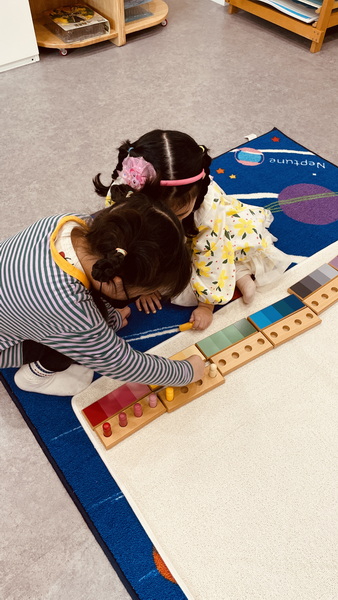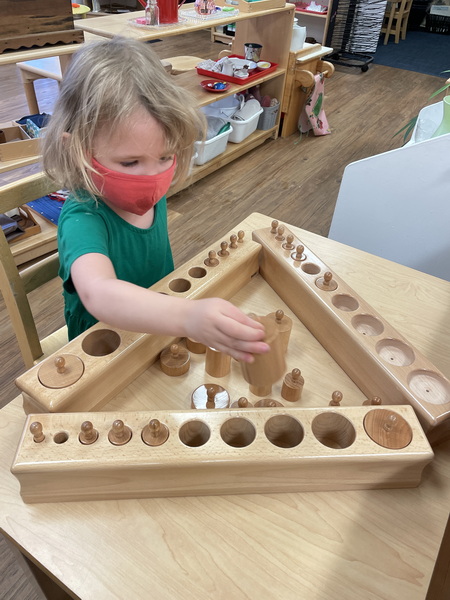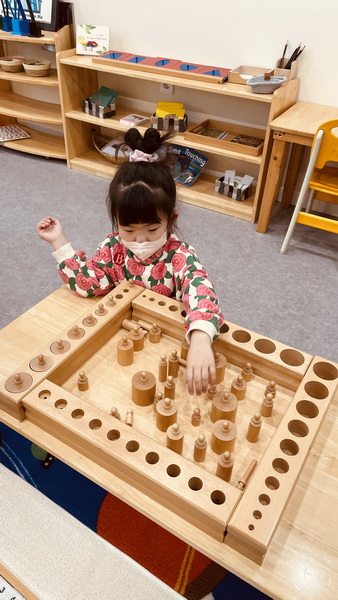Stimulation and Recognition: Expanding Children’s Sensorial Experience in the Classroom
By Kim Yul
Maria Montessori says in her book The Discovery of the Child (1967), “the training and sharpening of the senses have the obvious advantage of enlarging the field of perception and of offering an ever more solid foundation for intellectual growth” (p. 101). This quote rings true because everything we experience and know is communicated to our body and mind through sight, sound, touch, taste, and hearing. So, an important part of helping and supporting our children’s exploration journeys is starting with strengthening the senses, the greatest gift of children.

To this end, Montessori has developed a very specific and deliberate methodology to take advantage of the formations of development that exist in children from three to six years old. Until this point, children tirelessly absorb the sights, sounds, and messages of their environment and those around them. At the age of three, a child’s heightened sensitivity to order can be used to guide the fascinating task of learning to organize and decipher existing knowledge. In addition, by adding deliberate movement, you can improve the use of your senses while enhancing your awareness of mathematical principles and patterns that exist in the world around you.
In the Montessori classroom, this basic task is carried out through a didactic tool known as sensory material. Each series of exercises separates one sense, leads the child to the completion of observational skills, and helps the child absorb all the concepts through tactile means. Maria Montessori found, “The education of this sense leads to the recognition of objects through feeling, that is, through the simultaneous help of the tactile and muscular senses” (p. 188). Sensory work is done one-on-one between the teacher and the child and proceeds in a deliberate sequence from simple to complex, concrete to abstract.

To get started, learn to identify an object or concept. Often objects are very similar to each other, and a great deal of focus is required to identify the differences. Many sensory materials developed by Montessori have their own control over errors, which helps the child to work independently, as the tool self-corrects. For example, in a knobbed cylinder exercise, there are four wooden crate blocks containing ten cylinders with handles, each of which is mounted on a respective holder and has different dimensions, slight changes in height, and slight changes in diameter. During this activity, if a child misplaces a cylinder, it is sent to another cylinder without a home. Through this process, as children develop and improve their skills, they begin to rely solely on their own senses to determine the right sequence and know if they correctly identified each cylinder’s respective place.
As Montessori points out in her book, “the mistake is so obvious that it immediately destroys the child’s earlier illusion. The attention is brought sharply to bear upon the obvious problem” (p. 124). Stimulation and recognition of this type are what the Montessori classroom seeks to develop.
Source
Montessori, M. (1967). The Discovery of the Child. Ballantine Books.
The Author
Kim Yul is originally from Gwangju and has taught in Cincinnati, Ohio, for many years. He is a Montessori elementary school teacher who believes education can change the world.







